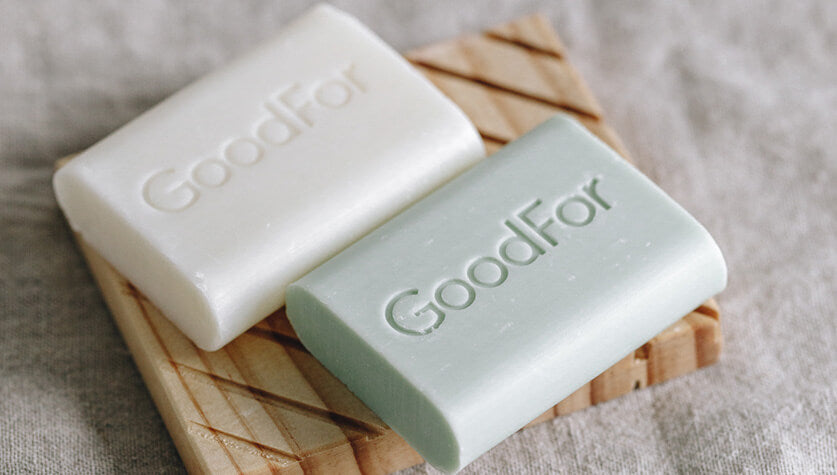Our Top High Fibre Foods (To Keep Things Moving…)
Fibre is one of the most important nutrients that all of us should be getting plenty of in our diets. It is plant-based carbohydrate that, unlike other carbohydrates such as sugar and starch, passes through the stomach undigested before reaching the colon where it can feed friendly gut bacteria and lead to various health benefits. Because of the way fibre passes through the digestive system, it helps to keep things moving and ultimately, keeps digestion in tip top shape. Yuss!
If you have digestive issues or are just feeling a little clogged up, it’s simple to increase your dietary fibre intake. Do so gradually and be sure to drink plenty of water in addition to consuming high-fibre foods to further encourage movement. Read on for some of the highest fibre foods we stock at GoodFor, including some delicious recipes to include these fibrous foods in your day-to-day.


Chia Seeds
Chia seeds may be the single best source of fibre, which makes them highly supportive of efficient digestion and overall gut health. When chia seeds come in contact with water, they expand to at least six times their size and form a gel-like consistency that fills you up… And keeps you full! (Goodfor Tip – this gel can be used to replace the egg content in many recipes for baked goods).
Chia seeds have an abundance of uses in cooking and baking sweet and savoury foods. Flavoured chia puddings are a sure fire way to increase your daily fibre intake, with the bonus that they can be made in advance then stored in glass jars so you can grab and go on your way out the door. Try one of these three Chia Pudding recipes as a breakfast, snack, or even dessert. Chia is also a great addition to recipes for bread, crackers, loaves, bliss balls and of course smoothies.
Shop our full range of organic chia seeds here.
Almonds
Almonds are a popular type of tree nut that are not only high in fibre, but also healthy fats, vitamin E, manganese and magnesium. They make a delicious natural snack as is, or a wonderful ingredient in raw food cooking, both sweet and savoury.
For savoury, sprinkle almonds over any salad recipe or one-pot-wonder for extra nutrition & crunch – try this Roast Seed Salad Topper recipe to get additional flavour from your almonds, or whip up this Simple Freekeh Salad as a fresh & nourishing lunch or dinner. For sweet, this Blueberry Almond Granola, or this Chai Spiced Pear Crumble are both delicious & nutritious for breakfast or dessert.
Shop our full range of almonds here.
Chickpeas
Rich in fibre and protein, chickpeas are a type of legume that are naturally gluten-free and low in sodium. They have a delicious nutty taste and buttery texture, and are a versatile pantry staple for many different recipes.
Most commonly, chickpeas are blended to make tasty hummus, which can become the hero of any platter, perk up carrots and celery, make a standard sandwich a gourmet delight, or simply be eaten by the spoonful straight out of the jar! Check out this Hummus Recipe or these Chickpea Lettuce Cups make a delicious, fibrous dinner for the whole family, while this Coconut & Turmeric Curry also acts as a hearty family meal.
Shop for organic golden chickpeas here.

 Quinoa
Quinoa
Quinoa was an important crop for the Incan Empire thousands of years ago, with a unique nutrition profile that has led to its modern-day ‘superfood’ status. It is packed with nourishing plant-based goodness, in particular a rich content of dietary fibre and protein. Great for those avoiding wheat, quinoa in all its different colours is easy to prepare and super versatile.
For lunch or dinner, try this Black Quinoa Buddha Bowl, or this Quinoa, Cranberry, Goat Cheese & Pistachio Salad – both great choices for spring & summertime feasting.
Use quinoa in your cooking as you would any other grains for a high fibre, nourishing alternative. Shop our full range of quinoa here.
Oats
Oats are among the healthiest grain foods on the planet. They’re very high in vitamins, minerals and antioxidants, and contain a powerful soluble fibre called oat beta-glucan, which may help regulate blood sugar and cholesterol levels.
Oats can be included in your diet in a myriad of ways, and are probably one of the easiest ways to up your dietary fibre intake. Whip up a simple oaty porridge for a warming breakfast bowl, or jazz things up a bit with this Maple Cinnamon Granola, Apple Pie Porridge, or Fermented Bircher Porridge.
Shop our varied range of oats here.

Popcorn
If your goal is to increase fibre intake, popcorn may be the best snack you can eat! Air-popped popcorn is very high in fibre per kJ content. Once you’ve popped your kernels using your favourite oil or butter, you can play around with different oils and seasonings to find a flavour that suits your preference. Some flavour toppings you might use are sea salt, vinegar, vanilla extract, coconut sugar, cinnamon, matcha, maple, chilli, curry powder, maca, the list goes on!
Shop for organic popcorn kernels here.
Split Peas
Split peas are made from the dried, split and peeled seeds of peas. Split green peas can absorb water faster than whole beans and peas, and they do not need to be rehydrated overnight. They are a rich source of protein, dietary fibre, and also some important minerals.
These small but nutritionally mighty members of the legume family are most popularly used in soup recipes; traditional Indian dishes like dahl; or cooked, pureed and seasoned with herbs and spices for a tasty side dish. They can also be included in recipes for veggie patties, salads and stir-fries. Split green peas do a great job at filling a dish out as a substitute to meat.
Shop for Split Green Peas here.
Other amazing sources of fibre include – ground flaxseeds, basil seeds, hemp hearts, activated buckwheat and so much more!
 GoodFor
GoodFor


